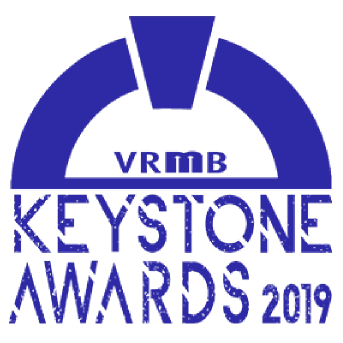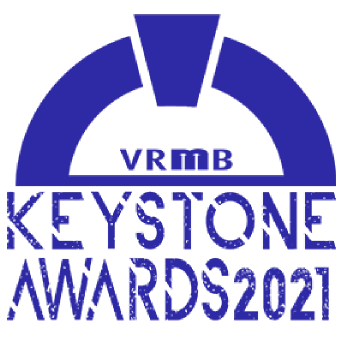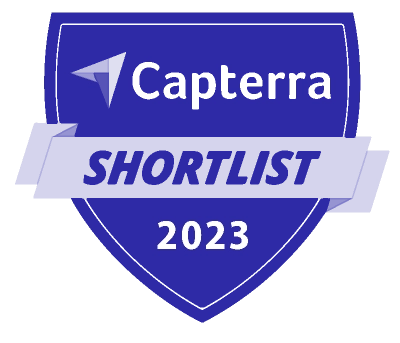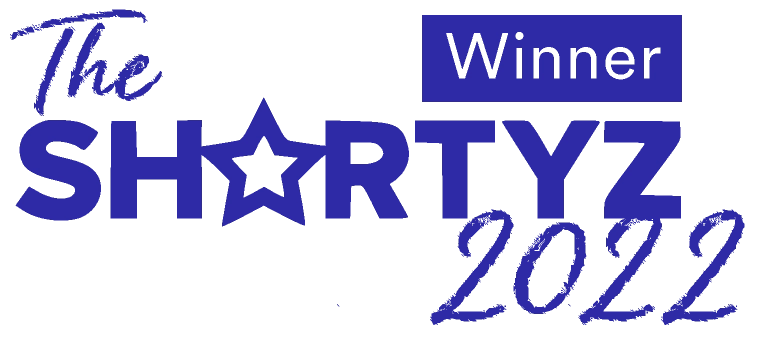Note: A complete guide to short-term rental business planning including a financial plan template can be found in this previous article.
In any market — but especially the highly competitive vacation rental landscape— it is essential as part of one’s business plan to have a solid financial model in place. As a vital tool that helps vacation rental property management companies and owners understand the financial feasibility of their vacation rental venture, a financial model analyzes costs, synthesizes assumptions, and provides projections for profit potential.
In this article, we’ll cover financial model components, tips, and steps to craft a financial model for success.
What is a vacation rental financial model?
Before delving into the key components and steps of creating a financial model, we should first clarify the term and why any vacation rental business should have one.
In simple terms, a financial model is a mathematical representation of a vacation rental property’s financial performance. It takes into account all the revenue streams, costs, and other financial factors to provide a comprehensive analysis. In this article, we’ll cover financial model components
Financial model components and valuation
The importance of a financial model in vacation rentals cannot be overstated. It serves as a roadmap for making critical decisions regarding pricing, expenses, investment opportunities, and financial projections. By utilizing a financial model, property owners can identify potential risks, evaluate profitability, and develop strategies for long-term success. Now, let’s explore the key components of a vacation rental financial model.
Property projection
The initial step in constructing a vacation rental business financial model is to project the actual number of properties, referred to as “units.” To do this, you’ll need to determine:
- The number of units you plan to acquire or lease over time, and the schedule for these acquisitions.
- The total expenditure for procuring these units, including costs associated with design and renovation.
- The method of financing these property acquisitions, whether through leasing or a combination of debt and equity.
Revenue estimation
Before delving into your revenue projections, it’s vital to establish several assumptions for each unit, including:
- The rental start date, which often differs from the acquisition date due to renovation and furnishing requirements.
- The average daily rate (ADR), which may fluctuate over the year, especially during high and low seasons.
The revenue estimation or revenue streams component focuses on predicting the income generated by a vacation rental property. This includes factors such as occupancy rates, average daily rates, cleaning fees, and rental duration.
Note: occupancy rate refers to the percentage of time that your vacation rental property is occupied by guests. A higher occupancy rate means more revenue, but it also means more wear and tear on that short-term rental. Balancing occupancy rates with maintenance costs is essential to planning for one-year, five-year, and long-term profitability.
Furthermore, property managers can use Airbnb and other online booking platforms and market research tools to gather data on occupancy rates in their area. This data can help them estimate the number of nights their property is likely to be rented out, allowing for more accurate cash flow projections.
Debt and interest
A vital component of any property rental financial model involves projecting your balance sheet, particularly:
- Assets (representing the properties you own)
- Debt (comprising mortgages used to acquire these properties)
Doing this enables you to calculate debt interest expenses, a critical factor affecting your profitability and cash flow if you’ve purchased properties with debt. It also facilitates the creation of a cash flow statement by accounting for debt repayments. Monthly calculations should cover debt drawdowns (if you acquire new properties with debt), actual loan repayments, and debt issuance.
P&L and cash flow
Having estimated revenues, expenses, and debt, the next steps involve building a profit-and-loss statement (P&L) to ascertain net profit. Simultaneously, a cash flow statement must encompass all cash-related items from the P&L and other financial movements, such as capital investments (Capex), fundraising activities, and debt management.
Understanding your cash flow is crucial, as it helps you determine the necessary funding required from investors or financial institutions, such as bank loans, to initiate and sustain your vacation rental business. This process is facilitated through the use of a funds chart, which aids in visualizing your funding requirements over time.
Investment property cost analysis
A thorough cost analysis is crucial for understanding the expenses associated with running a vacation rental property. This includes fixed costs like property taxes, insurance, and mortgage payments, as well as variable costs like maintenance, utilities, and marketing expenses. By accurately estimating costs, property owners can calculate their bottom line and identify areas for potential cost savings.
When conducting a cost analysis, property owners may consider a number of expenses, including those related to furnishing the rental property, cleaning services, property management, operating expenses, and any necessary repairs or renovations.
In addition to these key metrics, a comprehensive financial model should also consider factors such as inflation, tax implications, and potential changes in the market. These variables can have a significant impact on the financial performance of a vacation rental property and should be carefully analyzed.
Financial projection
Based on the revenue estimation and cost analysis, the profit/financial projection component provides property owners with a clear view of their expected profits. It takes into account all the revenue streams, subtracts the associated costs, and calculates the net profit. This projection not only serves as a benchmark for success but also enables property owners to evaluate the return on investment (ROI).
Property owners can use financial projections to assess the financial viability of their vacation rental property. By comparing projected profits to their initial investment, they can make a financial forecast and determine whether the property is generating a satisfactory return on investment.
Moreover, profit projections can help property owners identify areas for improvement and optimize their financial strategy. For example, if the financial projections indicate that certain costs are significantly impacting profitability, property owners can explore alternative solutions or negotiate better deals with suppliers.
Tips for financial model optimization
While creating a financial model is essential, optimizing it for maximum accuracy and effectiveness is equally important. Here are some tips to consider:
Tip 1: Regularly update your financial plan
A financial model should be continuously updated to reflect the latest rental property information and market conditions. If you notice a sudden increase in demand during a particular season, you can update your model to reflect this change. This will allow you to make more accurate financial projections and adjust your pricing strategies accordingly. A pro forma model becomes an indispensable financial tool enabling data-driven management.
Tip 2: Use conservative estimates
When projecting revenue and costs, it is advisable to use conservative estimates. This approach helps avoid overestimating income and underestimating expenses, ensuring that your financial model provides a realistic outlook.
For instance, if you are unsure about the occupancy rate during the off-peak season, it is better to err on the side of caution and assume a lower occupancy rate. This way, you can prepare for any potential downturns in revenue and adjust your budget accordingly. By using conservative estimates, you can also demonstrate to potential investors or lenders that you have thoroughly considered the risks involved in your vacation rental business.
Tip 3: Consider seasonality factors
Vacation rental properties often experience seasonal variations in demand and pricing. It is essential to incorporate these seasonal variations into your financial model.
One way to do this is by analyzing historical data with market research to understand rental property trends. By studying past booking patterns, you can identify the peak and off-peak seasons for your vacation rental property. This information can then be used to adjust your rental income revenue projections and pricing strategies accordingly.
Steps for building a vacation rental financial model
Follow these steps to develop a dynamic financial plan:
Step 1: Input purchase price and financing
If purchasing an investment property, factor in the purchase price, down payment, loan amount, interest rate, etc. Include closing costs.
Step 2: Project income
Conservatively estimate annual nights rented and average daily rate based on comparable listings. Multiply for total income.
Step 3: Itemize all expenses
Brainstorm every potential operating, maintenance, administrative, and tax expense. Vet estimates with experienced short-term rental owners and keep your financial statements organized with the help of Excel spreadsheets, Google Sheets, and accounting software.
Step 4: Model multiple scenarios
Create versions with different occupancy, rates, and costs. Test worst and best-case projections.
Step 5: Add key output metrics
Calculate cap rate, cash flow, ROI, breakeven point, and other metrics to assess viability.
Step 6: Run sensitivity analysis
Adjust variables like occupancy to understand the impact on profitability. Identify risks.
Step 7: Weigh against vacation rental and real estate comps
Compare projected returns to the actual performance of comparable neighborhood short-term rentals.
Step 8: Update with real data
Once operating, populate your model with actuals to improve expense assumptions. Having every revenue and cost component mapped out down to specifics enables data-driven purchase and operational decisions later.
Rental property financial model terms
Here are some important terms property managers and short-term rental owners should familiarize themselves with.
Income: Nightly/daily rate and projected annual occupancy; projected rental revenue across booking channels like Airbnb, Vrbo, and Booking.com; any ancillary income like cleaning/service fees
Operating expenses: Estimated maintenance, supplies, utilities, management fees, mortgage payments if financing, property taxes, insurance, etc.
Channel expenses: Platform commissions and fees, channel manager or software subscriptions
Rental property owner expenses: Any travel or mileage costs, administrative costs (e.g. accounting software), capital expenditures (CAPEX), and renovations
Tax expenses: Income taxes on rental revenue, occupancy, and other tourism-related taxes
Net profit: Total income minus all expenses
Cash flow: Net profit minus any debt service like mortgage
Return metrics: Cap rate, cash-on-cash return, IRR, payback period
Cash-on-cash return: Measures annual cash flow against total investment. Important to track over time.
Cap rate: Calculates return from income based on property value. Compare to real estate comps.
Payback period: Determines how long for the property to recoup upfront investment from net proceeds.
IRR: Estimates total annualized return accounting for cost of capital. Requires target threshold.
Breakeven occupancy: Identifies minimum annual occupancy needed to break even. Assess feasibility.
Familiarizing yourself with these terms and returning to these metrics when evaluating short-term rental opportunities helps quantify potential profitability versus speculative assumptions.
Conclusion
In conclusion, creating a vacation rental financial model is a crucial step for success in the competitive vacation rental market. By understanding the basics of a financial model, identifying key components, following a systematic approach, and optimizing the model, property owners can make informed decisions and maximize their profitability. With a robust financial model in place, property owners can confidently navigate the intricacies of the vacation rental industry and achieve long-term success.








